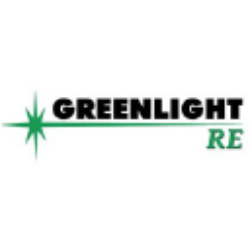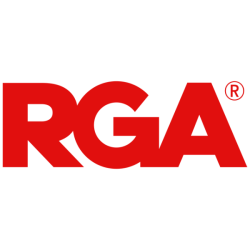MURGY

Münchener Rückversicherungs-Gesellschaft Aktiengesellschaft in München
MURGY
(3.2)10,24 USD
2.19% ROA
18.61% ROE
1.06x PER
63.001.488.684,03 USD
25.19% DER
2.39% Yield
8.74% NPM
Münchener Rückversicherungs-Gesellschaft Aktiengesellschaft in München Stock Analysis
Münchener Rückversicherungs-Gesellschaft Aktiengesellschaft in München Fundamental Analysis
Fundamental analysis in stock investing is like studying the foundation of a house before buying it. It involves looking at a company's financial health, like its earnings, assets, and debts, to determine if it's a good investment based on its fundamental strength and potential for growth.
| # | Analysis | Rating |
|---|---|---|
| 1 |
ROE
ROE surpassing expectations (18.34%) highlights strong profitability and efficient use of shareholders' equity, making it an appealing investment prospect. |
|
| 2 |
DER
The stock has a low debt to equity ratio (17%), which means it has a small amount of debt compared to the ownership it holds |
|
| 3 |
Dividend Growth
Investors can be encouraged by the company's strong dividend growth over the past five years, highlighting its ability to generate consistent returns and provide an attractive investment opportunity. |
|
| 4 |
Dividend
Shareholders can rely on the company's remarkable dividend history, consistently paying dividends for the past five years, demonstrating a steadfast dedication to rewarding investors. |
|
| 5 |
ROA
The stock's ROA (1.73%) shows that it's doing a pretty good job at making money from its assets, making it a solid choice to invest and earn steady profits. |
|
| 6 |
PBV
The stock's PBV ratio (1.89x) indicates a justifiable valuation, presenting a compelling choice for investors seeking reasonable returns. |
|
| 7 |
Revenue Growth
Over the past three years, this company's revenue has consistently grown, demonstrating a positive financial trend that makes it an appealing choice. |
|
| 8 |
Net Profit Growth
With continuous net profit growth in the past three years, this company demonstrates a strong financial performance, making it an enticing investment opportunity. |
|
| 9 |
Buffet Intrinsic Value
Based on Warren Buffett's formula, the company's stock appears undervalued (769), presenting an attractive investment chance with its intrinsic value surpassing the current market price. |
|
| 10 |
Assets Growth
Company's revenue has stayed stagnant, showing no signs of improvement and making it a less favorable choice. |
|
| 11 |
Graham Number
The Graham number calculation reveals that this company's stock price is potentially inflated, implying that it may not be a desirable investment option. |
Münchener Rückversicherungs-Gesellschaft Aktiengesellschaft in München Technical Analysis
Technical analysis in stock investing is like reading the patterns on a weather map to predict future weather conditions. It involves studying past stock price movements and trading volumes to make predictions about where a stock's price might go next, without necessarily looking at the company's financial health.
| # | Analysis | Recommendation |
|---|---|---|
| 1 | Awesome Oscillator | Buy |
| 2 | MACD | Buy |
| 3 | RSI | Hold |
| 4 | Stoch RSI | Sell |
Münchener Rückversicherungs-Gesellschaft Aktiengesellschaft in München Price Chart
Financial Statements
Financial statements are like report cards for companies. They show how much money a company makes (income statement), what it owns and owes (balance sheet), and where it spends its money (cash flow statement), helping stock investors understand if a company is healthy and worth investing in.
Income Statements
An income statement for a company is like a scoreboard for its profits and losses. It shows how much money the company made (revenue) and how much it spent to make that money (expenses), helping stock investors see if a company is making a profit or not.
Revenue in stock investing is the total amount of money a company earns from its sales, and it's a key factor that investors consider to assess a company's financial performance and growth potential.
| Year | Revenue | Growth |
|---|---|---|
| 2003 | 45.959.000.000 | |
| 2004 | 46.022.000.000 | 0.14% |
| 2005 | 48.493.000.000 | 5.1% |
| 2006 | 49.880.000.000 | 2.78% |
| 2007 | 53.122.000.000 | 6.1% |
| 2008 | 60.345.000.000 | 11.97% |
| 2009 | 59.583.000.000 | -1.28% |
| 2010 | 64.135.000.000 | 7.1% |
| 2011 | 60.908.000.000 | -5.3% |
| 2012 | 59.889.000.000 | -1.7% |
| 2013 | 57.927.000.000 | -3.39% |
| 2014 | 55.869.000.000 | -3.68% |
| 2015 | 55.862.000.000 | -0.01% |
| 2016 | 55.157.000.000 | -1.28% |
| 2017 | 55.334.000.000 | 0.32% |
| 2018 | 51.579.000.000 | -7.28% |
| 2019 | 57.310.000.000 | 10% |
| 2020 | 58.639.000.000 | 2.27% |
| 2021 | 63.860.000.000 | 8.18% |
| 2022 | 68.452.000.000 | 6.71% |
| 2023 | 57.904.000.000 | -18.22% |
| 2023 | 60.089.000.000 | 3.64% |
| 2024 | 69.560.000.000 | 13.62% |
Research and Development Expenses are the costs a company incurs to create and improve its products or services, which can be important for investors to evaluate a company's innovation and potential for future growth.
| Year | Research and Development Expenses | Growth |
|---|---|---|
| 2003 | 0 | |
| 2004 | 0 | 0% |
| 2005 | 0 | 0% |
| 2006 | 0 | 0% |
| 2007 | 0 | 0% |
| 2008 | 0 | 0% |
| 2009 | 0 | 0% |
| 2010 | 0 | 0% |
| 2011 | 0 | 0% |
| 2012 | 0 | 0% |
| 2013 | 0 | 0% |
| 2014 | 0 | 0% |
| 2015 | 0 | 0% |
| 2016 | 0 | 0% |
| 2017 | 0 | 0% |
| 2018 | 0 | 0% |
| 2019 | 0 | 0% |
| 2020 | 0 | 0% |
| 2021 | 0 | 0% |
| 2022 | 0 | 0% |
| 2023 | 0 | 0% |
| 2023 | 0 | 0% |
| 2024 | 0 | 0% |
General and Administrative Expenses are the costs a company incurs to run its day-to-day operations, such as office rent, salaries, and utilities, which investors consider to understand a company's overall efficiency and management effectiveness.
| Year | General and Administrative Expenses | Growth |
|---|---|---|
| 2003 | 0 | |
| 2004 | 0 | 0% |
| 2005 | 0 | 0% |
| 2006 | 2.155.000.000 | 100% |
| 2007 | 2.177.000.000 | 1.01% |
| 2008 | 2.216.000.000 | 1.76% |
| 2009 | 8.267.000.000 | 73.19% |
| 2010 | 9.209.000.000 | 10.23% |
| 2011 | 5.897.000.000 | -56.16% |
| 2012 | 2.794.000.000 | -111.06% |
| 2013 | 2.740.000.000 | -1.97% |
| 2014 | 2.737.000.000 | -0.11% |
| 2015 | 2.990.000.000 | 8.46% |
| 2016 | 2.945.000.000 | -1.53% |
| 2017 | 2.962.000.000 | 0.57% |
| 2018 | 3.027.000.000 | 2.15% |
| 2019 | 3.325.000.000 | 8.96% |
| 2020 | 2.841.000.000 | -17.04% |
| 2021 | 3.003.000.000 | 5.39% |
| 2022 | 3.399.000.000 | 11.65% |
| 2023 | 8.032.000.000 | 57.68% |
| 2023 | 8.617.000.000 | 6.79% |
| 2024 | 8.828.000.000 | 2.39% |
EBITDA stands for Earnings Before Interest, Taxes, Depreciation, and Amortization. It is a measure that helps stock investors analyze a company's profitability by looking at its earnings without considering certain expenses. This helps to get a clearer picture of the company's financial performance and its ability to generate cash flow.
| Year | EBITDA | Growth |
|---|---|---|
| 2003 | 2.046.000.000 | |
| 2004 | 2.889.000.000 | 29.18% |
| 2005 | 4.172.000.000 | 30.75% |
| 2006 | 5.510.000.000 | 24.28% |
| 2007 | 5.105.000.000 | -7.93% |
| 2008 | 3.353.000.000 | -52.25% |
| 2009 | 4.206.000.000 | 20.28% |
| 2010 | 3.415.000.000 | -23.16% |
| 2011 | 448.000.000 | -662.28% |
| 2012 | 4.587.000.000 | 90.23% |
| 2013 | 3.864.000.000 | -18.71% |
| 2014 | 2.389.000.000 | -61.74% |
| 2015 | 3.918.000.000 | 39.03% |
| 2016 | 3.650.000.000 | -7.34% |
| 2017 | 419.000.000 | -771.12% |
| 2018 | 3.168.000.000 | 86.77% |
| 2019 | 2.977.000.000 | -6.42% |
| 2020 | 1.539.000.000 | -93.44% |
| 2021 | 128.000.000 | -1102.34% |
| 2022 | 4.298.000.000 | 97.02% |
| 2023 | 5.944.000.000 | 27.69% |
| 2023 | -244.000.000 | 2536.07% |
| 2024 | 736.000.000 | 133.15% |
Gross profit is the money a company makes from selling its products or services after subtracting the cost of producing or providing them, and it is an important measure for investors to understand a company's profitability.
| Year | Gross Profit | Growth |
|---|---|---|
| 2003 | 45.959.000.000 | |
| 2004 | 46.022.000.000 | 0.14% |
| 2005 | 48.493.000.000 | 5.1% |
| 2006 | 49.880.000.000 | 2.78% |
| 2007 | 53.122.000.000 | 6.1% |
| 2008 | 60.345.000.000 | 11.97% |
| 2009 | 59.583.000.000 | -1.28% |
| 2010 | 64.135.000.000 | 7.1% |
| 2011 | 60.908.000.000 | -5.3% |
| 2012 | 59.889.000.000 | -1.7% |
| 2013 | 57.927.000.000 | -3.39% |
| 2014 | 56.352.000.000 | -2.79% |
| 2015 | 55.862.000.000 | -0.88% |
| 2016 | 55.157.000.000 | -1.28% |
| 2017 | 55.334.000.000 | 0.32% |
| 2018 | 52.052.000.000 | -6.31% |
| 2019 | 57.310.000.000 | 9.17% |
| 2020 | 58.639.000.000 | 2.27% |
| 2021 | 63.860.000.000 | 8.18% |
| 2022 | 68.452.000.000 | 6.71% |
| 2023 | 57.904.000.000 | -18.22% |
| 2023 | 64.732.000.000 | 10.55% |
| 2024 | 69.560.000.000 | 6.94% |
Net income in stock investing is like the money a company actually gets to keep as profit after paying all its bills, and it's an important measure to understand how well a company is doing financially.
| Year | Net Profit | Growth |
|---|---|---|
| 2003 | -434.000.000 | |
| 2004 | 1.833.000.000 | 123.68% |
| 2005 | 2.743.000.000 | 33.18% |
| 2006 | 3.536.000.000 | 22.43% |
| 2007 | 3.937.000.000 | 10.19% |
| 2008 | 1.528.000.000 | -157.66% |
| 2009 | 2.564.000.000 | 40.41% |
| 2010 | 2.430.000.000 | -5.51% |
| 2011 | 712.000.000 | -241.29% |
| 2012 | 3.195.000.000 | 77.72% |
| 2013 | 3.313.000.000 | 3.56% |
| 2014 | 3.153.000.000 | -5.07% |
| 2015 | 3.107.000.000 | -1.48% |
| 2016 | 2.580.000.000 | -20.43% |
| 2017 | 375.000.000 | -588% |
| 2018 | 2.310.000.000 | 83.77% |
| 2019 | 2.724.000.000 | 15.2% |
| 2020 | 1.211.000.000 | -124.94% |
| 2021 | 2.933.000.000 | 58.71% |
| 2022 | 3.432.000.000 | 14.54% |
| 2023 | 4.612.000.000 | 25.59% |
| 2023 | 4.606.000.000 | -0.13% |
| 2024 | 6.496.000.000 | 29.09% |
EPS, or earnings per share, is a measure that shows how much profit a company has earned for each outstanding share of its stock, and it is important for stock investors as it helps understand the profitability of a company and compare it with other companies in the market.
| Year | Earning per Share (EPS) | Growth |
|---|---|---|
| 2003 | 0 | |
| 2004 | 1 | 0% |
| 2005 | 1 | 100% |
| 2006 | 2 | 0% |
| 2007 | 2 | 0% |
| 2008 | 1 | 0% |
| 2009 | 1 | 100% |
| 2010 | 1 | 0% |
| 2011 | 0 | 0% |
| 2012 | 2 | 100% |
| 2013 | 2 | 0% |
| 2014 | 2 | 0% |
| 2015 | 2 | 0% |
| 2016 | 2 | 0% |
| 2017 | 0 | 0% |
| 2018 | 2 | 100% |
| 2019 | 19 | 94.44% |
| 2020 | 9 | -125% |
| 2021 | 21 | 60% |
| 2022 | 25 | 16.67% |
| 2023 | 3 | -700% |
| 2023 | 34 | 90.91% |
| 2024 | 49 | 31.25% |
Cashflow Statements
Cashflow statements show the movement of money in and out of a company, helping stock investors understand how much money a company makes and spends. By examining cashflow statements, investors can assess if a company is generating enough cash to pay its bills, invest in growth, and provide returns to stockholders.
Free cash flow is the leftover cash that a company generates after covering its operating expenses and capital expenditures, which is important for stock investors as it shows how much money a company has available to invest in growth, pay dividends, or reduce debt.
| Year | Free Cashflow | Growth |
|---|---|---|
| 2003 | 3.145.000.000 | |
| 2004 | 5.308.000.000 | 40.75% |
| 2005 | 6.119.000.000 | 13.25% |
| 2006 | 6.886.000.000 | 11.14% |
| 2007 | 6.628.000.000 | -3.89% |
| 2008 | 8.428.000.000 | 21.36% |
| 2009 | 8.654.000.000 | 2.61% |
| 2010 | 8.836.000.000 | 2.06% |
| 2011 | 6.075.000.000 | -45.45% |
| 2012 | 5.535.000.000 | -9.76% |
| 2013 | 2.187.000.000 | -153.09% |
| 2014 | 7.527.000.000 | 70.94% |
| 2015 | 4.327.000.000 | -73.95% |
| 2016 | 3.132.000.000 | -38.15% |
| 2017 | 1.833.000.000 | -70.87% |
| 2018 | 2.998.000.000 | 38.86% |
| 2019 | 15.680.000.000 | 80.88% |
| 2020 | 7.219.000.000 | -117.2% |
| 2021 | 5.226.000.000 | -38.14% |
| 2022 | -18.315.000.000 | 128.53% |
| 2023 | 5.483.000.000 | 434.03% |
| 2024 | 0 | 0% |
Operating cash flow represents the cash generated or consumed by a company's day-to-day operations, excluding external investing or financing activities, and is crucial for stock investors as it shows how much cash a company is generating from its core business operations.
| Year | Operating Cashflow | Growth |
|---|---|---|
| 2003 | 3.145.000.000 | |
| 2004 | 5.308.000.000 | 40.75% |
| 2005 | 6.119.000.000 | 13.25% |
| 2006 | 6.886.000.000 | 11.14% |
| 2007 | 6.628.000.000 | -3.89% |
| 2008 | 8.428.000.000 | 21.36% |
| 2009 | 8.654.000.000 | 2.61% |
| 2010 | 8.836.000.000 | 2.06% |
| 2011 | 6.075.000.000 | -45.45% |
| 2012 | 5.535.000.000 | -9.76% |
| 2013 | 2.187.000.000 | -153.09% |
| 2014 | 7.527.000.000 | 70.94% |
| 2015 | 4.327.000.000 | -73.95% |
| 2016 | 3.132.000.000 | -38.15% |
| 2017 | 1.833.000.000 | -70.87% |
| 2018 | 2.998.000.000 | 38.86% |
| 2019 | 9.493.000.000 | 68.42% |
| 2020 | 7.219.000.000 | -31.5% |
| 2021 | 5.226.000.000 | -38.14% |
| 2022 | -7.644.000.000 | 168.37% |
| 2023 | 5.829.000.000 | 231.14% |
| 2024 | 0 | 0% |
Capex, short for capital expenditures, refers to the money a company spends on acquiring or upgrading tangible assets like buildings, equipment, or technology, which is important for stock investors as it indicates how much a company is investing in its infrastructure to support future growth and profitability.
| Year | Capital Expenditure | Growth |
|---|---|---|
| 2003 | 0 | |
| 2004 | 0 | 0% |
| 2005 | 0 | 0% |
| 2006 | 0 | 0% |
| 2007 | 0 | 0% |
| 2008 | 0 | 0% |
| 2009 | 0 | 0% |
| 2010 | 0 | 0% |
| 2011 | 0 | 0% |
| 2012 | 0 | 0% |
| 2013 | 0 | 0% |
| 2014 | 0 | 0% |
| 2015 | 0 | 0% |
| 2016 | 0 | 0% |
| 2017 | 0 | 0% |
| 2018 | 0 | 0% |
| 2019 | -6.187.000.000 | 100% |
| 2020 | 0 | 0% |
| 2021 | 0 | 0% |
| 2022 | 10.671.000.000 | 100% |
| 2023 | 346.000.000 | -2984.1% |
| 2024 | 0 | 0% |
Balance Sheet
Balance sheets provide a snapshot of a company's financial health and its assets (such as cash, inventory, and property) and liabilities (like debts and obligations) at a specific point in time. For stock investors, balance sheets help assess the company's overall worth and evaluate its ability to meet financial obligations and support future growth.
Equity refers to the ownership interest or stake that shareholders have in a company, representing their claim on its assets and earnings after all debts and liabilities are paid.
| Year | Equity | Growth |
|---|---|---|
| 2003 | 19.767.000.000 | |
| 2004 | 20.196.000.000 | 2.12% |
| 2005 | 24.653.000.000 | 18.08% |
| 2006 | 26.429.000.000 | 6.72% |
| 2007 | 25.458.000.000 | -3.81% |
| 2008 | 21.256.000.000 | -19.77% |
| 2009 | 22.278.000.000 | 4.59% |
| 2010 | 23.028.000.000 | 3.26% |
| 2011 | 23.309.000.000 | 1.21% |
| 2012 | 27.423.000.000 | 15% |
| 2013 | 26.226.000.000 | -4.56% |
| 2014 | 30.304.000.000 | 13.46% |
| 2015 | 30.965.000.000 | 2.13% |
| 2016 | 31.784.000.000 | 2.58% |
| 2017 | 28.198.000.000 | -12.72% |
| 2018 | 26.500.000.000 | -6.41% |
| 2019 | 30.576.000.000 | 13.33% |
| 2020 | 29.994.000.000 | -1.94% |
| 2021 | 30.945.000.000 | 3.07% |
| 2022 | 21.202.000.000 | -45.95% |
| 2023 | 27.437.000.000 | 22.72% |
| 2023 | 29.772.000.000 | 7.84% |
| 2024 | 30.696.000.000 | 3.01% |
Assets represent the valuable resources that a company owns, such as cash, inventory, property, and equipment, and understanding a company's assets helps investors assess its value and potential for generating future profits.
| Year | Assets | Growth |
|---|---|---|
| 2003 | 208.901.000.000 | |
| 2004 | 214.250.000.000 | 2.5% |
| 2005 | 218.176.000.000 | 1.8% |
| 2006 | 215.874.000.000 | -1.07% |
| 2007 | 214.253.000.000 | -0.76% |
| 2008 | 215.417.000.000 | 0.54% |
| 2009 | 223.412.000.000 | 3.58% |
| 2010 | 236.358.000.000 | 5.48% |
| 2011 | 247.580.000.000 | 4.53% |
| 2012 | 258.360.000.000 | 4.17% |
| 2013 | 254.288.000.000 | -1.6% |
| 2014 | 272.979.000.000 | 6.85% |
| 2015 | 276.520.000.000 | 1.28% |
| 2016 | 267.805.000.000 | -3.25% |
| 2017 | 265.722.000.000 | -0.78% |
| 2018 | 270.168.000.000 | 1.65% |
| 2019 | 287.553.000.000 | 6.05% |
| 2020 | 297.946.000.000 | 3.49% |
| 2021 | 312.405.000.000 | 4.63% |
| 2022 | 298.570.000.000 | -4.63% |
| 2023 | 263.780.000.000 | -13.19% |
| 2023 | 269.779.000.000 | 2.22% |
| 2024 | 276.052.000.000 | 2.27% |
Liabilities refer to the financial obligations or debts that a company owes to creditors or external parties, and understanding a company's liabilities is important for investors as it helps assess the company's financial risk and ability to meet its obligations.
| Year | Liabilities | Growth |
|---|---|---|
| 2003 | 189.134.000.000 | |
| 2004 | 194.054.000.000 | 2.54% |
| 2005 | 193.523.000.000 | -0.27% |
| 2006 | 189.445.000.000 | -2.15% |
| 2007 | 188.795.000.000 | -0.34% |
| 2008 | 194.161.000.000 | 2.76% |
| 2009 | 201.134.000.000 | 3.47% |
| 2010 | 213.330.000.000 | 5.72% |
| 2011 | 224.271.000.000 | 4.88% |
| 2012 | 230.937.000.000 | 2.89% |
| 2013 | 228.062.000.000 | -1.26% |
| 2014 | 242.675.000.000 | 6.02% |
| 2015 | 245.555.000.000 | 1.17% |
| 2016 | 236.021.000.000 | -4.04% |
| 2017 | 237.524.000.000 | 0.63% |
| 2018 | 243.668.000.000 | 2.52% |
| 2019 | 256.977.000.000 | 5.18% |
| 2020 | 267.952.000.000 | 4.1% |
| 2021 | 281.460.000.000 | 4.8% |
| 2022 | 277.368.000.000 | -1.48% |
| 2023 | 6.612.000.000 | -4094.92% |
| 2023 | 240.007.000.000 | 97.25% |
| 2024 | 245.356.000.000 | 2.18% |
Münchener Rückversicherungs-Gesellschaft Aktiengesellschaft in München Financial Ratio (TTM)
Valuation Metrics
- Revenue per Share
- 496
- Net Income per Share
- 44.49
- Price to Earning Ratio
- 1.06x
- Price To Sales Ratio
- 0.95x
- POCF Ratio
- 0
- PFCF Ratio
- 0
- Price to Book Ratio
- 0.21
- EV to Sales
- 0.98
- EV Over EBITDA
- 22.89
- EV to Operating CashFlow
- 0
- EV to FreeCashFlow
- 0
- Earnings Yield
- 0.94
- FreeCashFlow Yield
- 0
- Market Cap
- 63,00 Bil.
- Enterprise Value
- 65,16 Bil.
- Graham Number
- 478.68
- Graham NetNet
- -1795.21
Income Statement Metrics
- Net Income per Share
- 44.49
- Income Quality
- 0
- ROE
- 0.2
- Return On Assets
- 0.02
- Return On Capital Employed
- 0.02
- Net Income per EBT
- 0.87
- EBT Per Ebit
- 1.1
- Ebit per Revenue
- 0.09
- Effective Tax Rate
- 0.16
Margins
- Sales, General, & Administrative to Revenue
- 0.14
- Research & Developement to Revenue
- 0
- Stock Based Compensation to Revenue
- 0
- Gross Profit Margin
- 1.01
- Operating Profit Margin
- 0.09
- Pretax Profit Margin
- 0.1
- Net Profit Margin
- 0.09
Dividends
- Dividend Yield
- 0.02
- Dividend Yield %
- 2.39
- Payout Ratio
- 0
- Dividend Per Share
- 1.13
Operating Metrics
- Operating Cashflow per Share
- 0
- Free CashFlow per Share
- 0
- Capex to Operating CashFlow
- 0
- Capex to Revenue
- 0
- Capex to Depreciation
- 0
- Return on Invested Capital
- 0.11
- Return on Tangible Assets
- 0.02
- Days Sales Outstanding
- 0
- Days Payables Outstanding
- 0
- Days of Inventory on Hand
- 0
- Receivables Turnover
- 0
- Payables Turnover
- 0
- Inventory Turnover
- 0
- Capex per Share
- 0
Balance Sheet
- Cash per Share
- 41,47
- Book Value per Share
- 229,78
- Tangible Book Value per Share
- 197.15
- Shareholders Equity per Share
- 228.91
- Interest Debt per Share
- 58.97
- Debt to Equity
- 0.25
- Debt to Assets
- 0.03
- Net Debt to EBITDA
- 0.76
- Current Ratio
- 8.41
- Tangible Asset Value
- 26,34 Bil.
- Net Current Asset Value
- -221,76 Bil.
- Invested Capital
- 26741000000
- Working Capital
- 20,79 Bil.
- Intangibles to Total Assets
- 0.02
- Average Receivables
- 0,00 Bil.
- Average Payables
- 0,00 Bil.
- Average Inventory
- 0
- Debt to Market Cap
- 0.12
Dividends
Dividends in stock investing are like rewards that companies give to their shareholders. They are a portion of the company's profits distributed to investors, typically in the form of cash payments, as a way for them to share in the company's success.
| Year | Dividends | Growth |
|---|---|---|
| 2009 | 1 | |
| 2010 | 1 | 100% |
| 2011 | 1 | 0% |
| 2012 | 1 | 0% |
| 2013 | 1 | 0% |
| 2014 | 1 | 0% |
| 2015 | 1 | 0% |
| 2016 | 1 | 100% |
| 2017 | 1 | 0% |
| 2018 | 1 | 0% |
| 2019 | 1 | 0% |
| 2020 | 1 | 0% |
| 2021 | 1 | 0% |
| 2022 | 1 | 0% |
| 2023 | 1 | 0% |
| 2024 | 1 | 0% |
Münchener Rückversicherungs-Gesellschaft Aktiengesellschaft in München Profile
About Münchener Rückversicherungs-Gesellschaft Aktiengesellschaft in München
Münchener Rückversicherungs-Gesellschaft Aktiengesellschaft in München engages in the insurance and reinsurance businesses worldwide. The company operates through five segments: Life and Health Reinsurance; Property-Casualty Reinsurance; ERGO Life and Health Germany; ERGO Property-Casualty Germany; and ERGO International. It offers life and health reinsurance solutions, such as financial market risks, data analytics, claims handling and underwriting, medical research, health market, capital management, and digital underwriting and analytics, as well as MIRA digital suite; and property and casualty reinsurance solutions, including agricultural risk, data analytics, infrastructure risk profiler, remote inspection, retroactive reinsurance, insurance linked securities, location risk, risk transfer, and cyber, as well as NatCatSERVICE for natural catastrophe loss database, REALYTIX ZERO, IMPROVEX, cert2go, consulting for product development, prospective structured reinsurance, and Vahana AI for motor claims. The company also provides solutions for industry clients, such as IoT cover, earnings quality insurance protection, captive insurance and risk transfer, liability, weather risks, space and satellite insurance, bioenergy plant performance insurance, solar energy insurance, wind farm insurance, mining insurance, construction projects covers and services, aviation insurance, power and utilities, oil and gas companies insurance, industrial cyber insurance, risk suite, data and location risk intelligence, digital risks, PV warranty insurance, parametric, Insure AI, liquidation damage cover, and natural catastrophes solutions. In addition, it offers life, property-casualty, health, legal protection, and travel insurance products under the ERGO brand name. The company was founded in 1880 and is based in Munich, Germany.
- CEO
- Dr. Torsten Jeworrek
- Employee
- 43.519
- Address
-
KOeniginstrasse 107
Munich, 80802
Münchener Rückversicherungs-Gesellschaft Aktiengesellschaft in München Executives & BODs
| # | Name | Age |
|---|---|---|
| 1 |
Dr. Markus Riess Head of Economics, Sustainability & Public Affairs and Member of Management Board |
70 |
| 2 |
Dr. Thomas Blunck Member of Management Board |
70 |
| 3 |
Mr. Stefan Heinrich Golling Member of Management Board |
70 |
| 4 |
Dr. Torsten Jeworrek Chief Executive Officer of Reinsurance Business |
70 |
| 5 |
Dr. Achim Kassow Labour Relations Director & Member of Management Board |
70 |
| 6 |
Dr. Joachim Wenning Chairman of Management Board |
70 |
| 7 |
Ms. Clarisse Kopff Member of Management Board |
70 |
| 8 |
Dr. Christoph Jurecka Chief Financial Officer & Member of Management Board |
70 |
| 9 |
Mr. Nicholas J. Gartside C.F.A. Chief Investment Officer & Member of Management Board |
70 |
| 10 |
Ms. Mari Lizette Malherbe Member of Management Board |
70 |









